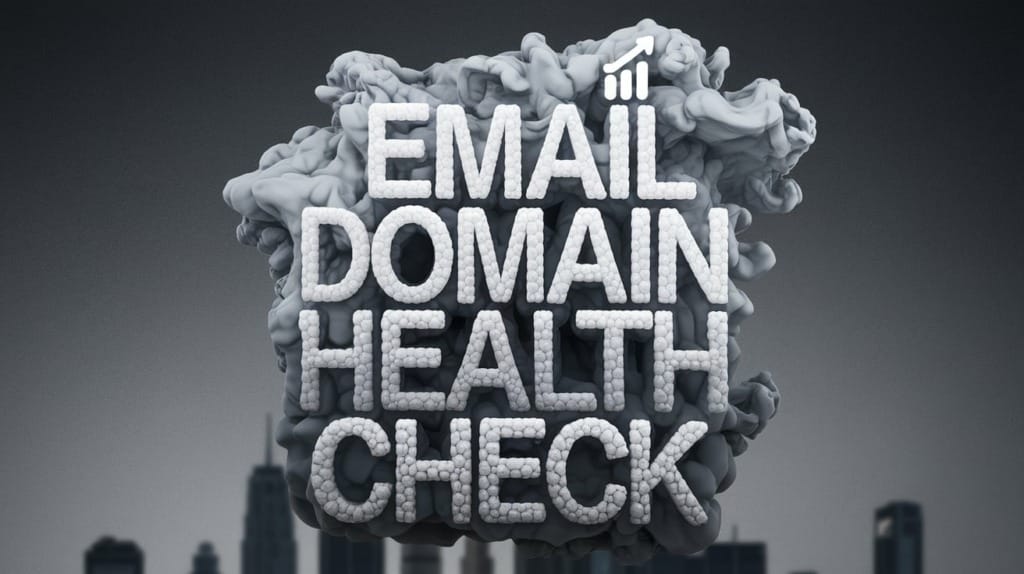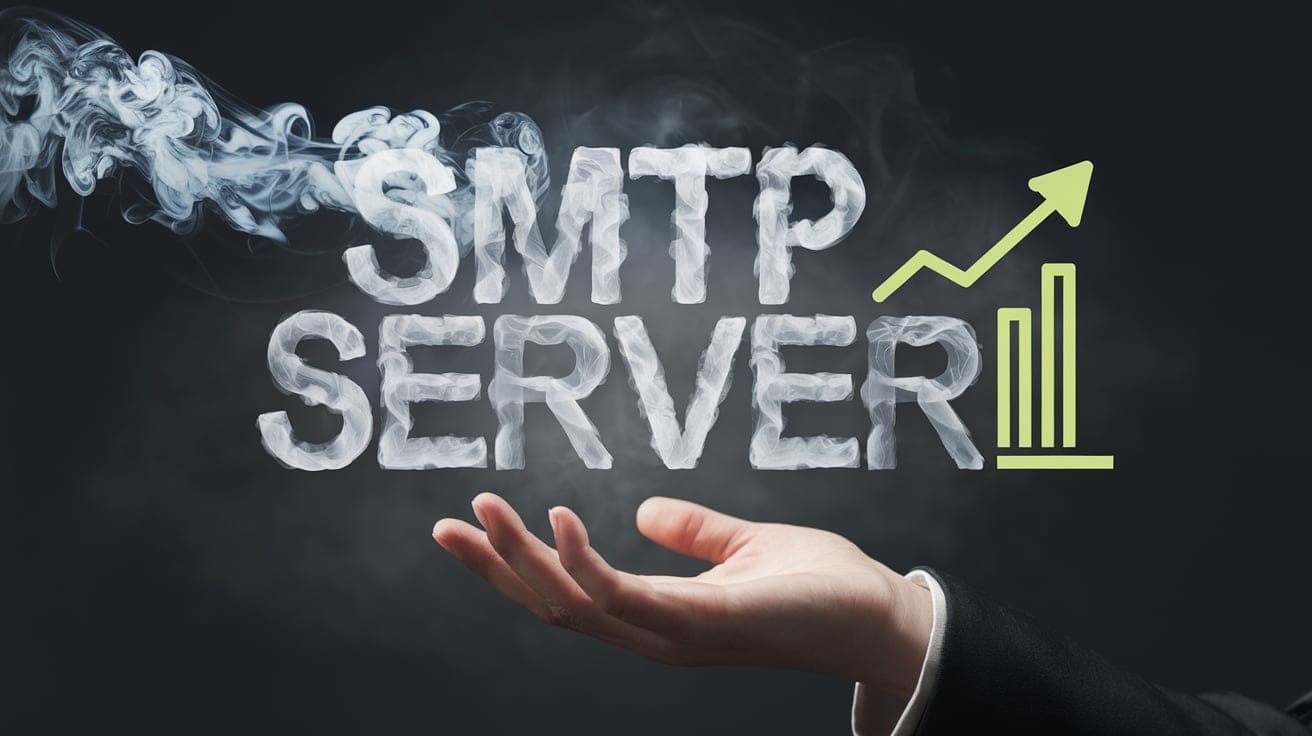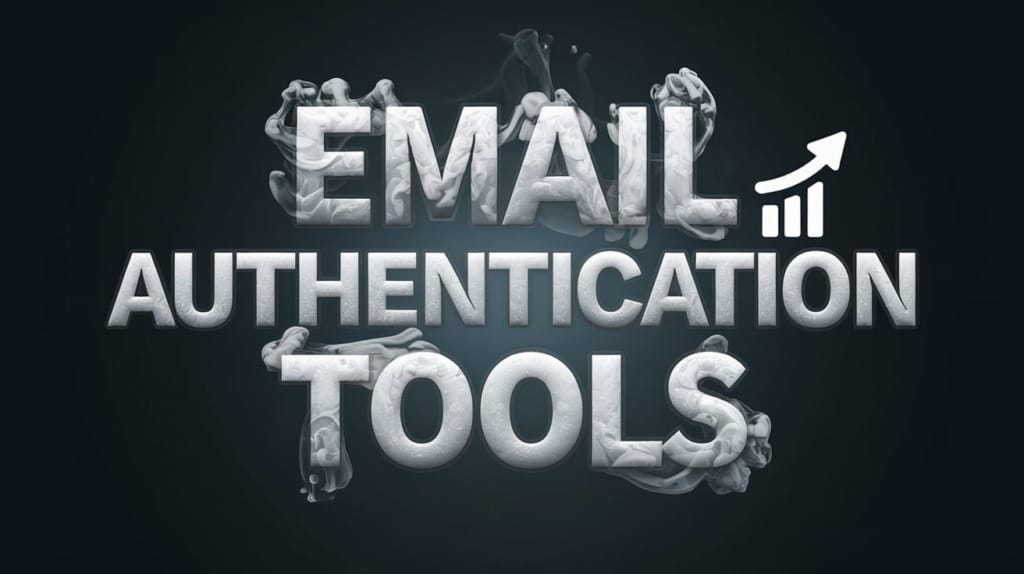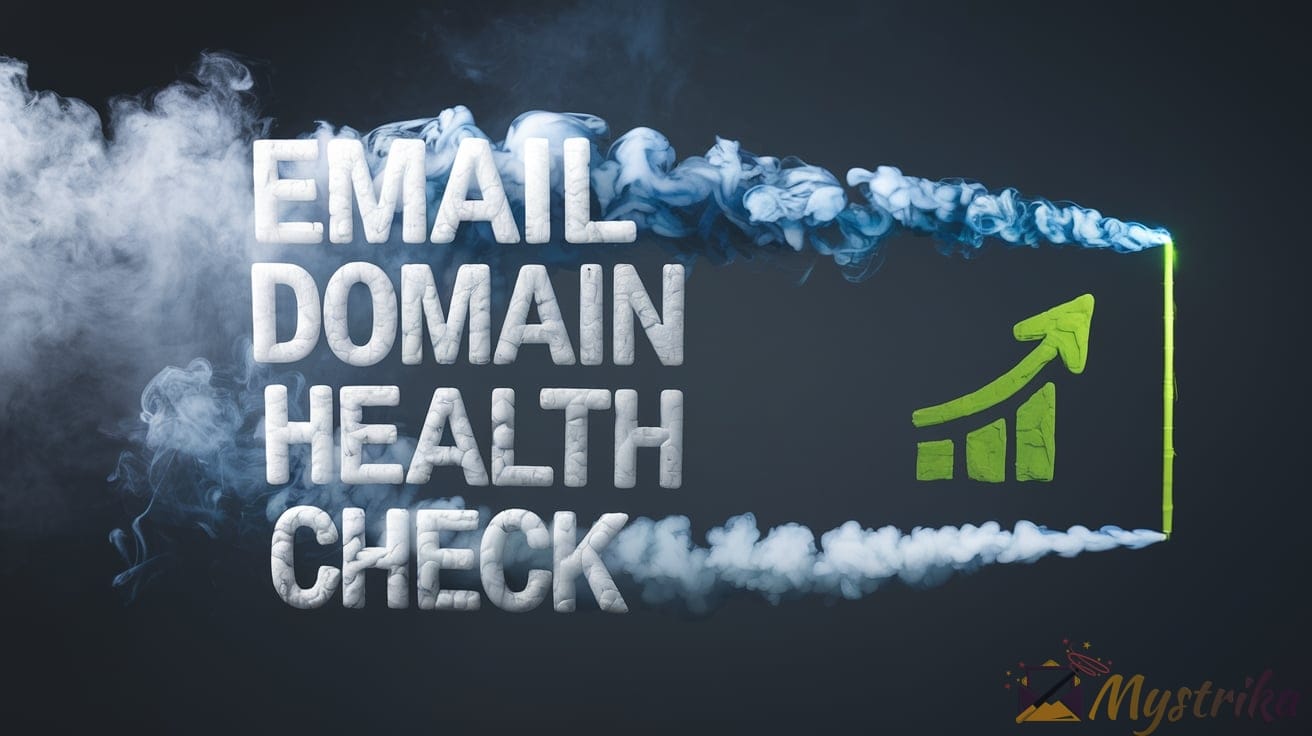Is your email domain sounding congested and phlegmy lately? Get your domain into tip-top shape and breathe easy knowing your emails will flow freely into inboxes! This comprehensive guide provides the blueprint for a complete email domain health checkup.
We’ll explore key areas like DNS records, blacklists, subdomain structures, reputation monitoring, and ongoing maintenance plans. Consider this your one-stop-shop for diagnosing issues, administering fixes, and prescribing tips to amplify your domain’s deliverability. With a healthy domain, you can scale your sender reputation and subscriber base without pesky hiccups. Read on to get a clean bill of health!
Why Email Domain Health Matters
A healthy email domain is the foundation for strong email deliverability and inbox placement. Just like regular check-ups and exercise helps keep your body running smoothly, routinely monitoring and optimizing the health of your sender domain is crucial for business email success.
When your domain’s health is suboptimal, the consequences can range from slightly annoying to catastrophically detrimental. At best, your emails may land in the promotions or spam folders of recipients instead of the primary inbox. At worst, messages from your domain could be blocked entirely by major ISPs and never reach your audience at all.
Clearly, every business wants to avoid the pitfalls of poor deliverability. By taking proactive steps to maximize your domain health, you can confidently press send knowing your outreach emails will circulate freely and unobstructed into the inboxes of your target recipients.
Deliverability Directly Depends on Domain Health
Deliverability is defined as the percentage of emails sent that successfully arrive in subscribers’ inboxes instead of getting filtered out by spam filters or blocked by email service providers.
Many factors influence deliverability, but the health of your sending domain is right at the heart of it. After all, your domain reputation is one of the first things receiving servers check when deciding the fate of your emails.
If your domain has a history of issues like spam complaints, blacklisting, or insecure infrastructure, red flags will be raised. As a result, your future email campaigns will likely end up in the junk folder by default.
Conversely, a pristine domain reputation signals to receivers that your messages are legitimate and deserve inbox placement. As you continually send quality emails from a healthy domain, your sender reputation strengthens over time.
Avoid the Spam Folder at All Costs
Landing in the promotions or spam folder is a major blow to the effectiveness of email campaigns. According to statistics from HeyMarket, open rates drop precipitously when emails end up in tabs beyond the primary inbox:
- Primary inbox open rate: 29.6%
- Promotions tab open rate: 7.8%
- Spam folder open rate: 0.1%
Considering most sales teams see open rates in the 20-30% range for cold outreach campaigns, getting filtered into the promotions tab or spam can tank your open rates by over 60% or more.
Spamlord filters are complex and opaque, so you can’t guarantee inbox placement 100% of the time. However, constantly monitoring and optimizing the health of your email domain will tilt the odds in your favor. Receivers are far more likely to trust and reward senders with reputable domains by allowing their messages into the inbox.
Healthy Domain = Healthy Email Circulation
Here’s an analogy to illustrate the importance of email domain health:
Think of your domain reputation as the heart health of your email circulation system. Your email list is the blood that flows through your email arteries. Just like cholesterol can clog human arteries, issues like blacklisting or incomplete authentication records can restrict the free flow of your emails.
But when your domain health is optimized, your email circulation flows freely and efficiently. Messages get delivered to the inboxes of your subscribers without friction or blockages. Open and click rates remain robust, nurturing strong customer relationships.
Making email domain health a priority will keep your circulation flowing smoothly for the long haul. Just like consistent exercise improves cardiovascular health over time, ongoing maintenance and monitoring of your sender domain will strengthen its reputation with major ISPs month after month.
The Bottom Line
Tuning up your domain’s health with procedures like DNS record checks, blacklist monitoring, and SMTP evaluations will directly translate into higher deliverability rates. And deliverability is perhaps the single biggest driver of email marketing performance.
Commit to taking a proactive stance on understanding and optimizing every aspect of your domain’s health. With a clean bill of health for your domain, you can hit send on your cold outreach and marketing emails with confidence knowing that engaged recipients are eagerly awaiting your messages in their inbox.

Step 1 – Evaluate DNS Records
The DNS records configured for your domain establish the foundation for healthy email flow and delivery. That’s why routinely checking and optimizing your SPF, DKIM, DMARC, and BIMI records is arguably the most crucial step in safeguarding your domain’s reputation.
When these authentication and policy records are properly published, receiving email servers can easily confirm your domain is legitimate. This results in your messages getting the VIP treatment – smooth transport directly to the inbox.
However, incomplete or misconfigured DNS can undermine deliverability, so let’s explore how to validate and optimize each of the key records related to email domain health.
SPF Record Check
SPF stands for Sender Policy Framework, and it’s essentially a DNS record that specifies which servers and IP addresses are authorized to send email from your domain. The purpose is to prevent spammers and scammers from using email spoofing to make their messages appear to come from your domain.
Here are some key facts about SPF:
- Stored in the TXT record for your domain’s DNS settings
- Uses “v=spf1” syntax to define authorized servers
- Common mechanisms include:
- ip4: Allowed IPv4 addresses
- ip6: Allowed IPv6 addresses
- include: References SPF records of other domains
- exists: Allow domains with A records
- all: Default policy if no matches
- Hardfail (~all) and Softfail (?all) policies for unknown senders
How to Validate and Troubleshoot Your SPF Record:
Use an SPF record validator like Folderly’s Generator to confirm your published SPF record is syntactically correct and properly formatted.
You can also use dig on the command line:
dig yourdomain.com txtThis displays the configured TXT records for further manual inspection.
Potential issues to look for:
- No SPF record published
- Syntax errors
- Does not list all authorized sending servers
- Missing include mechanisms for 3rd party services
- Too many DNS lookups allowed
- Hardfail policy not implemented
Folderly recommends reviewing and optimizing your SPF record every 1-2 months as changes occur in your email sending infrastructure.
DKIM Record Check
DomainKeys Identified Mail (DKIM) works hand-in-hand with SPF to validate senders and ensure your domain hasn’t been spoofed.
With DKIM, your mail server cryptographically signs outbound emails with a unique private key. Receivers can then query public DNS records to retrieve your public key and verify the signature is legitimate.
Here are some key pointers on properly configuring and checking DKIM:
- Requires generating a public/private key pair
- Private key added to your email server config
- Public key published in DNS TXT record
- Signature included in email headers
- Receivers check signature against public key
- Valid signature proves authenticity
You can check your DKIM record using an online tester or by sending an email to your Gmail account and inspecting the headers for the DKIM-Signature field.
Potential issues:
- No DKIM record found
- Invalid public key published
- Signature missing from outbound email
- Signature does not validate
Rotate your DKIM keys periodically and publish the updated public key in DNS to improve security.
DMARC Record Check
DMARC builds on SPF and DKIM by giving you control over what happens to unauthenticated email claiming to come from your domain.
This extra layer of protection is crucial because neither SPF or DKIM is universally implemented. DMARC provides backup instructions on how receivers should handle emails lacking SPF/DKIM validation.
Key DMARC facts:
- Specified in TXT DNS record
- v=DMARC1 syntax
- p= policy tells receivers what to do (none, quarantine, reject)
- pct= percentage of enforcing (phase in enforcement)
- ruf= recipient for forensic reports
- Requires correctly configured SPF/DKIM for enforcement
Checking your DMARC can be done via online validators like Folderly’s Generator or by requesting DMARC aggregate and forensic reports from receivers.
Potential issues:
- No DMARC record present
- Permissive policy like p=none
- Low enforcement percentage
- Aggregate reports show spoofing/abuse
For optimal protection, use a p=reject policy with 100% enforcement. Analyze DMARC reports frequently to detect threats.
BIMI Record Check
BIMI stands for Brand Indicators for Message Identification. It’s an emerging authentication standard that displays your brand logo in the receiver’s inbox when your emails pass DMARC validations.
Benefits of proper BIMI setup:
- Logo builds brand recognition and trust
- Reinforces domain ownership and authenticity
- Requires DMARC record to be present
- Supported by major email clients
To validate your BIMI record:
- Upload company logo to cert provider like Entrust
- Obtain a BIMI hostname and certificate
- Add BIMI hostname in DNS as TXT record
- Check BIMI validator tools
Troubleshooting BIMI issues:
- Verify DMARC record is present
- Ensure BIMI hostname is valid and published
- Check certificate is unexpired
- Confirm client supports BIMI
- Work with receivers if issues persist
Following these steps will ensure your BIMI branding appears prominently in subscriber inboxes, increasing engagement and trust.
DNS Record Optimization is Crucial
As you can see, properly configuring and maintaining the DNS records associated with email authentication is challenging but critically important.
Treat it as an ongoing initiative, not a one-time setup project. Monitor your SPF, DKIM, DMARC, and BIMI records closely across all of your domain’s sending infrastructure.
For additional guidance and troubleshooting, don’t hesitate to enlist email deliverability experts who can audit your current records and provide optimization recommendations. A clean bill of health on your DNS paves the way for inbox success.

Step 2 – Check Blacklist Status
One of the fastest ways to torpedo your domain’s deliverability is to end up on one or more email blacklists. That’s why frequently monitoring your blacklist status and getting delisted quickly if issues arise is so crucial.
Getting blacklisted can feel like a slap on the wrist by major email providers. But it’s really more like a complete blockade that prevents your emails from reaching their destination.
Let’s review the major email blacklists you need to monitor, the consequences of being listed, and tips for getting removed as rapidly as possible.
Why Blacklists Devastate Deliverability
Email blacklists are databases of IP addresses and domains that receivers deem suspicious, malicious or spammers. They are shared between major email providers and used to block messages before they ever reach subscribers’ inboxes.
Some examples of the most influential blacklist databases:
- Spamhaus Block List (SBL)
- Spamhaus Exploits Block List (XBL)
- Barracuda Reputation Block List (BRBL)
- SURBL Spam URI Realtime Blocklists
- SpamCop Blocking List (SCBL)
Blacklist providers use proprietary methods and spam traps to detect unsavory behavior from domains and add them to lists. Criteria can include:
- Spam complaints
- Spam traps
- Malware distribution
- Phishing
- Botnets
- Denial of service attacks
- Lack of proper SPF/DKIM records
Once added to blacklists, messages from your domain will be severely filtered or blocked completely by major email providers like Gmail, Yahoo, and Outlook.
This instant destruction of your deliverability is why constant monitoring and an action plan for getting delisted is essential.
Major Email Blacklists to Check Regularly
While there are dozens of smaller blacklist databases, these are the primary ones to check on a regular basis:
Spamhaus Block List (SBL)
One of the largest and most influential real-time blacklists, the Spamhaus Block List (SBL) is used by ISPs worldwide to identify and block spam from domains and IP addresses. Spamhaus uses a variety of detection techniques including spam traps, honeypots, and botnet monitoring.
If your domain ends up on the Spamhaus SBL, you can expect deliverability rates close to zero until you successfully go through their delisting process. Luckily, Spamhaus is responsive and reasonable in removing legitimate senders who end up on the list accidentally.
Barracuda Reputation Block List (BRBL)
Major email providers like Gmail and Outlook rely heavily on the Barracuda Reputation Block List (BRBL) to filter out messages from questionable domains.
Barracuda is aggressive in blacklisting – they utilize extensive spam traps and complaints to quickly block domains with even slight signals of suspicious activity. You can land on the BRBL for things like missing SPF records or solicitation emails.
Because of Barracuda’s ubiquity and heavy-handed approach, getting off their blacklist should be an urgent priority to restore inbox deliverability.
Tips for Getting Delisted Rapidly
If you find your domain on a major email blacklist, take these steps for rapid removal:
1. Correct Any Issues
Did you recently send a campaign that triggered spam complaints? Or forget to configure SPF/DKIM records? Identify and fix the root cause. Blacklists won’t delist you until the offense is resolved.
2. Request Removal Politely
Email the blacklist support team, explain the situation calmly, and request removal. Have details ready like your domain name, IPs, and relevant dates.
3. Be Patient But Persistent
The delisting process can take days or weeks depending on the volume of requests. Check in politely if you don’t hear back after 5 business days.
4. Consider Delist Services
Agencies like Folderly offer delisting services that can shortcut the process through established relationships with major blacklists.
With a coordinated effort, you can resolve blacklist issues before they permanently torpedo your domain reputation and email deliverability. Never ignore blacklisting – be proactive.
Spamhaus Blacklist Removal Process
Spamhaus maintains detailed documentation on their policies for getting removed from the Spamhaus Block List (SBL) and other Spamhaus lists. Here are the key steps:
Verify Listing
Use their lookup tools to confirm your domain and IPs are actually listed currently. Spamhaus publishes the facts they use to make blacklisting decisions.
Identify Root Cause
Did a supplier you use send spam? Or are there botnet infections in your infrastructure? Understanding the reason Spamhaus blacklisted you will smooth the process.
Send Removal Request
Politely email [email protected] with your situation. Provide your domain, IPs, and any details that can accelerate investigation.
Provide Assurances
Inform Spamhaus of steps you’ve taken to resolve the root cause, like terminating vendor relationships or cleaning infections. This helps prove you addressed the issue.
Wait Patiently
It can take Spamhaus days to dig into your request and verify the problem is fixed. Avoid repeated messages asking for status updates.
With evidence you resolved their concerns, Spamhaus will generally delist within a week or so. Be polite and persistent if it goes longer.
Getting Delisted from Barracuda Blacklist
Barracuda makes it relatively smooth to be removed from their BRBL blacklist. Just follow these recommended steps:
Check Your Status
Verify the current BRBL listing status for your IPs and domain using Barracuda’s Email Security Reputation Center lookup tool.
Send De-Listing Request
Email [email protected] with your domain and IPs. Explain that you’ve addressed any issues and would like to be removed from BRBL. Provide supporting details.
Complete Best Practices Checklist
Barracuda asks senders to complete a best practices checklist covering topics like email authentication and list hygiene. This signals you’re committed to healthy sending standards.
Wait Patiently
It may take Barracuda 3-5 business days to review, execute, and confirm your delisting. Avoid repeated status request emails.
With the above steps, you can generally expect removal from Barracuda BRBL within a week or so. Be persistent yet polite if it takes longer.
Don’t Let Blacklisting Derail Deliverability
Getting blacklisted can happen surprisingly easily, even to legitimate senders. But with vigilance, rapid response, and persistence, you can get delisted and resume your inbox deliverability rates.
Be proactive by routinely checking major blacklists using lookup tools. If issues arise, act swiftly to identify the root cause, implement fixes, and send polite removal requests.
With the steps outlined here, you can minimize the deliverability damage from blacklisting and maintain your domain’s pristine reputation over the long haul.
Step 3 – Evaluate SMTP Server Setup
They aren’t sexy, but proper SMTP server configurations are crucial for email deliverability. The Simple Mail Transfer Protocol facilitates the routing and transport of your outbound messages across the internet.
Like a complex system of roads, bridges and intersections, your SMTP servers must be optimized to smoothly carry large volumes of email traffic to recipients.
Let’s explore the key components of SMTP delivery to check and ways to validate your configurations.
Why SMTP Matters for Deliverability
Your domain’s Simple Mail Transfer Protocol (SMTP) servers act as dispatchers and transporters of your outbound emails. They receive messages from your email services and send them across the public internet toward recipients.
To maintain strong deliverability, your SMTP setup needs:
- Sufficient throughput capacity – Avoid bottlenecks that slow email flow during high volume blasts.
- Reputable IPs – IP reputation impacts deliverability so maintain clean IPs for SMTP.
- Proper DNS pointers – MX records must route to your SMTP servers reliably.
- Security – Stop spammers from co-opting your SMTP servers to relay mail.
- Scalability – Smoothly handle increases in traffic from email list growth.
Proactively monitoring and optimizing the performance, security and reliability of your SMTP environment ensures smooth transport of your critical email campaigns.
How to Validate Your SMTP Setup
Checking your email SMTP setup involves inspecting configurations and testing real-world functionality:
Review Configs
If hosting your own SMTP servers, log in and validate all settings for security, performance, and delivery routing. Watch for misconfigurations.
Check MX Pointers
Use MX lookup tools to confirm your MX records are routing to your desired SMTP IPs.
Assess Throughput
Monitor CPU, network, and memory metrics on your SMTP servers during test blasts. Watch for bottlenecks indicating insufficient capacity.
Test Functionality
Validate seamless functionality by sending emails and tracking logs end-to-end through your SMTP environment. Confirm clean hand-offs between hops.
Analyze Delivery Data
Inspect email delivery logs from your ESP for errors getting mail to your SMTP endpoints. Slow transfers indicate problems.
Taking a layered approach across configurations, metrics, testing, and logs will provide a complete picture of your SMTP health.
Troubleshooting and Optimizing Your SMTP Servers
If your testing and inspection identifies issues, here are tips for troubleshooting and optimizing your SMTP setup:
- Update configurations to resolve misconfigurations causing problems.
- Scale up infrastructure capacity if volume is exceeding SMTP resources.
- Switch or add new SMTP IPs if reputation of current ones is poor.
- Validate proper rDNS and SPF/DKIM for new SMTP IPs before use.
- Fix faulty MX records pointing to incorrect or unavailable SMTP servers.
- Tighten security to prevent use of your SMTP environment by spammers.
- Update TLS config for encrypted email transport.
- Optimize topology for more direct mail routing.
Don’t overlook your SMTP environment when assessing email domain health. Proper foundations support large, reliable email volumes flowing smoothly to your recipients’ inboxes.

Step 4 – Use Email Authentication Tools
Conducting a manual inspection of DNS records, blacklist status, and other email domain health essentials takes time. Thankfully, specialized software tools exist to automate testing and provide detailed diagnostics.
These email authentication tools are invaluable for monitoring overall domain reputation, catching issues early, and continuously optimizing your configurations.
Let’s explore the key features and top options when choosing an email validation and monitoring service.
Core Features and Benefits
Here are the main capabilities to look for in email testing and monitoring tools:
- Comprehensive DNS record checks – Automate testing of SPF, DKIM, DMARC, and other DNS parameters that impact deliverability.
- Blacklist monitoring – Continuously check major email blacklists to detect issues early before impacts snowball.
- Spam filter tests – Submit sample emails to see if messages get flagged by major spam filters like SpamAssassin.
- ** SMTP diagnostics** – Assess configurations, security and performance of SMTP servers.
- Email validations – Confirm syntax of From addresses, message headers, and content.
- ** Whitelist monitoring** – Detect whitelist status and listings over time.
- **Reputation scoring **- Calculate an overall domain reputation rating based on key email health metrics.
- Historical tracking – Graph and monitor email health trends over time to optimize.
- Easy integration– Embed tests in workflows or account dashboards for seamless access.
This level of comprehensive and automated testing is impossible to match doing manual checks. The right tools becomes an extension of your team.
Recommended Email Authentication Services
If looking to bolster your capabilities, here are some reputable email verification and monitoring tools to evaluate:
Folderly
Folderly offers a robust email deliverability platform combining analytics, blacklist monitoring, and ongoing reputation management.
Key features include:
- Unified dashboard showing reputation score and key metrics over time.
- Automated DNS, blacklist, and spam filter testing.
- Real-time alerts if issues detected.
- Deliverability consultants provide optimization recommendations.
- API integrations available.
Folderly acts as an always-on assistant that simplifies monitoring and tuning your email domain health.
Kickbox
Kickbox is a popular email verification API with a focus on real-time validation of email addresses and spam testing.
Main capabilities:
- REST API for integrating validation into apps.
- Confirm if email addresses are valid before sending.
- Submission to SpamAssassin for spam filter checks.
- Webhook alerts on events like new spam trap detections.
- Free plan available with limited checks.
If needing to confirm destination addresses and spam risks on the fly, Kickbox is a solid choice.
MailTest.xyz
MailTest.xyz offers a free email tester supporting spam and deliverability checks.
Key features:
- Submit emails to see if various spam filters would block them.
- Detailed spam filter results.
- DNS record validation.
- Email header parser.
- Blacklist monitoring options available.
- Simple web interface with detailed reports.
For occasional domain health checks without advanced features, MailTest provides solid fundamentals.
Don’t Go It Alone
Maintaining strong email deliverability over time is a team effort, so leverage solutions that simplify monitoring and empower optimization.
The right email verification tools act like an always-alert security camera for your domain reputation. They never miss issues so you can tune configurations and resolve problems before impacts grow.
Consider services like Folderly that offer comprehensive diagnostics along with expert consulting on fixes. This takes the guesswork out and lets you focus on high-level deliverability strategy while trusting your tools (and partners) to handle the tactical Domain checks efficiently and comprehensively.

Step 5 – Check Link Redirects
The links included in your emails don’t just drive traffic – they also impact deliverability. Using consistent redirect patterns back to your domain helps reinforce your brand identity and builds sender reputation over time.
Let’s explore some best practices for structuring links in emails to maintain trust and bolster domain health.
Redirects Reinforce Your Domain Identity
When recipients click links in your emails, where do those links ultimately take them? The destination websites provide signals to email providers about your legitimacy as a sender.
For optimal deliverability, ensuring your email links redirect back to your primary domain or reputable/relevant sites can:
- Strengthen brand recognition – Redirects keep users on your domain property to boost familiarity.
- Improve continuity – Recipients experience a seamless journey versus getting dumped to unfamiliar sites.
- Increase transparency – Redirect paths avoid appearing suspicious or deceptive to receivers.
- Prevent spoofing signals – Generic redirects can raise spam flags if not matching your domain.
In short: The links in your emails should match your domain identity and provide value, not redirect to random sites or dead ends.
Build Sender Reputation With Consistent Redirects
Not only is optimizing a one-time exercise. Maintaining consistent redirect patterns over multiple email campaigns has compounding benefits for your sender reputation.
Regular redirect traffic from emails back to your website tells receivers:
- This sender drives engaged visitors to their domain.
- The messaging aligns tightly with the sender’s brand.
- The domain provides a destination for click traffic.
- Users find the landing pages relevant and trustworthy.
Consistency and alignment in redirect behavior builds familiarity and trust with receiving providers. They come to associate your domain identity with legitimate engagement, strengthening your sender reputation.
Best Practices for Structuring Link Redirects
Follow these practices when inserting links in your emails:
- Use relative paths like example.com/offer instead of deep links.
- Point landing pages back to your main domain site if possible.
- Ensure all redirect destinations are functioning and relevant.
- Create site journeys matching the email content focus.
- Avoid redirects that pass through multiple unrelated domains.
- Monitor link analytics for irregular click patterns.
- Keep Branded display URLs consistent with your domain.
Proper redirect design is a team effort between your email and web teams. Collaborate to match domains, build cohesive experiences, and monitor behavior over time.
Final Tips
Remember, your emails don’t exist as isolated messages. Receivers judge them within the context of your overall domain reputation.
By taking a holistic view of redirects, you can structure links that reinforce brand familiarity, continuity, and alignment over each campaign. This strengthens trust and perception of your domain.
So take the extra time to optimize your email link redirects. It’s one of many small but impactful steps to bolster your domain’s health and deliverability over the long haul.
Step 6 – Review Subdomain Levels
In large organizations, subdomains are commonly used to delineate departments, campaigns, brands, or geographies. When configured properly, subdomains can function fine for email delivery. However, certain practices and subdomain levels carry more risk than others.
As part of your comprehensive domain checkup, auditing your subdomains and levels will help identify any high-risk configurations that could undermine deliverability.
How Subdomains Impact Email Delivery
Subdomains provide a way to segment web and email traffic under your primary domain. For example:
- sales.company.com
- offers.company.com
- company.ca
In essence, each subdomain acts as a separate domain as far as reputation goes. Best practices include:
- Maintain similar sending standards across all subdomains to avoid issues sullying certain ones.
- Limit the total number of subdomains sending high volumes to reduce fragmentation.
- Monitor subdomains independently for impacts like blacklisting.
You want to avoid compartmentalizing email so much that your send volume gets diluted across subdomains. Focusing on fewer, core subdomains results in higher volumes and better reputation.
Safest Subdomain Levels for Email
All subdomains will function for sending email. However, certain levels come with higher deliverability risks:
Second-level – safest, these follow your base domain directly:
- newsletter.company.com
Third-level – moderately safe depending on volume:
- offers.deals.company.com
Fourth+ level – high-risk, avoid when possible:
- email.mail.messaging.company.com
Higher levels introduce complexity with very diluted send volume per subdomain. Since major ESPs judge reputation at the subdomain level, this can result in issues for higher subdomains.
Subdomain Best Practices
Follow these best practices when structuring your email subdomains:
- Consolidate emails under a few core branded second-level subdomains when possible for concentrated volume and reputation.
- Limit third-level subdomains to temporary needs like short campaigns. Redirect back to core subdomains after.
- Avoid ongoing high sending volumes from fourth+ level subdomains.
- Use subdirectory naming on web properties when feasible instead of subdomains for segmentation.
- Monitor blacklists, spam complaints, and engagement metrics for each subdomain independently.
- Make sure SPF, DKIM, DMARC are properly published on all sending subdomains.
Keeping subdomains consolidated, properly authenticated, and continuously monitored will help you avoid dangerous deliverability pitfalls from over-segmentation.
Audit and Optimize Your Subdomains
Make subdomain management part of your regular email domain health reviews.
Audit all existing subdomains and look for:
- Stray subdomains not in use diluting reputation
- Higher level subdomains supporting ongoing, high-volume programs
- Subdomains lacking proper SPF/DKIM/DMARC records
- Any signs of blacklisting or spam filtering on subdomains
As you find issues, develop a plan to redirect unused subdomains and consolidate volume under core second-level domains.
Proper subdomain structure and hygiene will prevent deliverability problems as your email program scales and evolves over time.

Step 7 – Monitor Domain Reputation
After checking and optimizing all aspects of your email domain’s health, the work doesn’t stop. Establishing ongoing monitoring of your overall domain reputation provides early visibility into issues and helps guide continual optimization.
Think of reputation tracking as putting your domain health on a digital dashboard. Let’s explore key metrics to monitor and why vigilance is so important.
Why Ongoing Monitoring is Crucial
Maintaining strong email domain health is not a one-time project. It’s an endless pursuit. As your program evolves, new issues can crop up if you aren’t diligently monitoring your reputation.
Benefits of ongoing tracking include:
- Early issue detection – Don’t let small problems snowball into crises. Nip them quickly.
- Quantify impacts – Correlate dips in metrics with changes made.
- Optimize configurations – Tune setups by incrementally improving metrics.
- Prioritize actions – Focus energy where it will provide the biggest boost.
- Report achievements – Show the ROI on deliverability initiatives to justify budgets.
You can only improve what you measure. Comprehensive monitoring provides the data foundation for intelligently guiding your email domain health over the long haul.
Key Domain Reputation Metrics to Track
Fold in monitoring of these metrics into your regular deliverability reviews:
- Blacklist statuses – Monitor and resolve any new blocklistings.
- Spam filter verdicts – Detect rising spamminess before impacts escalate.
- Engagement rates – Inboxing provides lift to open and click rates.
- Complaint rates – Increases can signal deliverability issues.
- SMTP performance – Ensure your email infrastructure keeps pace with volumes.
- DNS configurations – Avoid DNS issues undermining email transport.
- Reputation scores – Use all-up scores to gauge your overall domain health.
Leverage email authentication tools to automatically surface trends across key performance indicators that collectively represent your domain’s sender reputation.
Take a Proactive Stance
Don’t just rely on your ESP to tell you when deliverability issues arise. With deep domain reputation monitoring in place, your team can take a proactive versus reactive stance.
When you have your finger on the pulse of all metrics impacting email health, you quickly detect adverse trends and can course correct before impacts compound.
Think of your domain’s reputation as an airplane dashboard. You want clear visibility into all critical metrics affecting performance so you can make adjustments while smoothly sailing, versus waiting for warning alarms to sound.
Ongoing monitoring allows for incremental tuning and optimization in response to trends. You move the needles yourself rather than relying on external alerts.
Make Monitoring a Priority
Given its importance, reputation tracking should be a standing agenda item on your team’s regular cadence.
Set aside time to review trends, diagnose issues, brainstorm solutions, and assign tasks to keep your domain’s health improving week after week, month after month.
With a dashboard summarizing your email domain’s health and proactive posture to act on insights, you can confidently scale your program knowing deliverability will keep pace.

Maintain Health With an Ongoing Plan
Like a thriving garden, a healthy email domain requires nurturing and care over time, not just a one-time fertilizing. Set your domain up for inbox success by creating a maintenance plan for continuous monitoring and improvements.
With the right frameworks in place, you can detect issues early, course-correct quickly, and gradually optimize all aspects of your email infrastructure and programs.
Schedule Regular Health Checks
Checking your email domain’s health should occur on a defined cadence just like important business reviews.
Carve out time monthly or quarterly to thoroughly walk through key areas:
- DNS record configurations
- Blacklist monitoring
- Link redirect patterns
- DMARC reports
- Reputation score trends
- Spam test verdicts
- Complaint rate analysis
- Subdomain structures
Ideally, automate as many checks as possible for efficiency. Supplement with manual verifications where needed.
Set calendar invites to ensure you complete comprehensive reviews on a regular basis. Consistency is key.
Address Any Issues Rapidly
Your scheduled reviews will surface areas needing tuning – don’t let them linger!
Have a protocol in place to quickly diagnose problems, formulate solutions collaboratively, and assign owners.
Typical issues that may arise include:
- Broken link redirects
- Spike in spam complaints
- Blacklisting by new databases
- DNS misconfigurations
- Expired DKIM keys
Move rapidly to understand root causes and implement fixes before impacts compound. For example, get delisted once you’re added to blacklists to prevent spreading.
Continually Optimize Over Time
Each review presents new opportunities for incremental improvements:
- Tighten SPF records as new tools get added.
- Scale SMTP capacity ahead of list growth.
- Test new engagement approaches.
- Publish updated DMARC aggregate reports.
- Experiment with DKIM key lengths.
- Explore new authentication mechanisms like BIMI.
Don’t settle for good enough – continually raise the bar on best practices for configuration hygiene, monitoring vigilance, and program strategy.
Make Deliverability a Habit
With a structured cadence and joint commitment to continual tuning, you can transform domain health from a periodic distraction into an ingrained discipline.
Set your entire team up for inbox success by making deliverability second nature through maintained vigilance, open collaboration, and gradual improvements over time.
A flourishing email domain, like any thriving system, requires care and feeding. Make it a habit, not an afterthought.

Key Takeaways
Optimizing your email domain’s health takes diligence across many areas, but pays dividends in the form of excellent deliverability and inbox placement. Here are the key takeaways:
- Monitor DNS records like SPF, DKIM, and DMARC closely, as they establish critical sender validation.
- Routinely check major email blacklists to avoid devastating blocks by ISPs. Act swiftly if issues arise.
- Validate SMTP setup for optimal security, capacity, and routing to support high email volumes.
- Leverage email authentication tools to automate testing and surface problems early.
- Structure link redirects to reinforce domain identity and build sender reputation over campaigns.
- Consolidate traffic under a few core subdomains to maximize volume and reputation for each.
- Track domain reputation metrics proactively to guide ongoing optimization efforts.
- Schedule regular health reviews and address issues quickly as they emerge.
With a comprehensive maintenance plan, you can stay ahead of problems, make incremental improvements over time, and sustain excellent email deliverability as your program grows.
Frequently Asked Questions
What is email domain health?
Email domain health refers to the overall reputation and deliverability capabilities of your sender domain. It encompasses factors like DNS records, blacklist status, link patterns, subdomain structures, and ongoing reputation.
Why is good email domain health important?
A healthy domain improves deliverability by building trust with major ISPs. This results in your emails reliably reaching subscriber inboxes rather than getting filtered to spam or blocked entirely.
How can I check the health of my email domain?
Start by auditing your DNS records, monitoring blacklists, reviewing link redirects, checking subdomain levels, and tracking domain reputation metrics over time. Authentication tools can automate testing.
What should I do if my domain gets blacklisted?
Act swiftly to understand the reason for blacklisting, implement corrective actions, and request removal from blacklist providers. Be persistent yet polite in your delisting requests until your domain is removed.
How often should I check the health of my email domain?
Ideally, build a regular cadence such as monthly or quarterly reviews. Check key parameters like blacklists more frequently such as weekly. Ongoing monitoring is key.
What is the best tool for checking email domain health?
Leading options include Folderly, Kickbox, and MailTest.xyz. Look for comprehensive authentication checks, reputation monitoring, and expert consulting. Integrations and automation streamline the process.
How can I continuously improve my email domain’s health?
Make incremental enhancements over time by refining configurations, scaling infrastructure, raising authentication standards, optimizing link patterns, consolidating subdomains, and addressing issues promptly.
What is the impact of poor email domain health?
Subpar domain health leads to reduced deliverability, higher spam filtering, lower open/click rates, increased complaints, potential blocking, and damage to sender reputation over time.
How long does it take to improve a poor domain reputation?
It depends on the extent of issues, but allow at least 3-6 months once implementing fixes to rebuild trust and improve reputation with major receivers. Shortcuts rarely exist.

